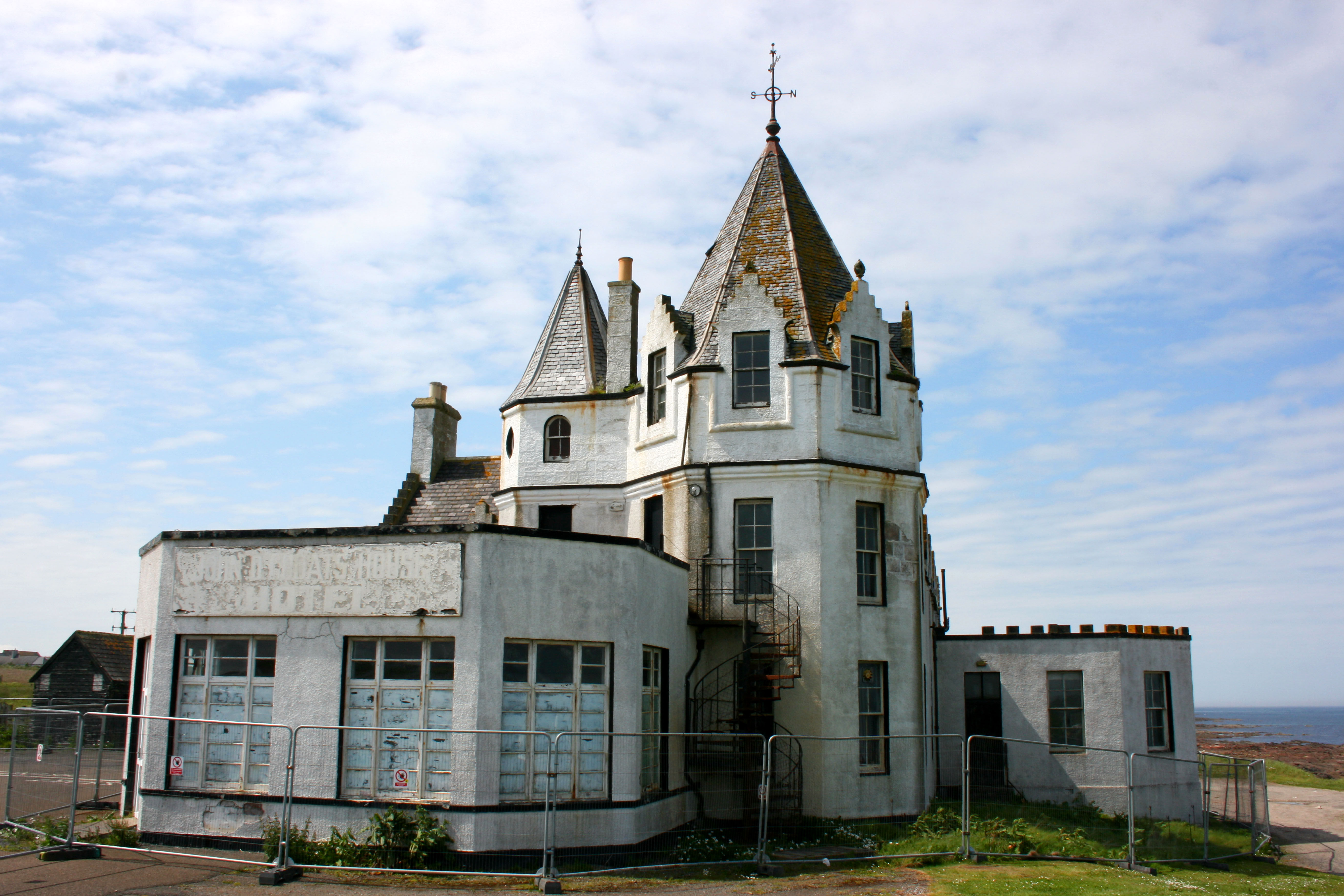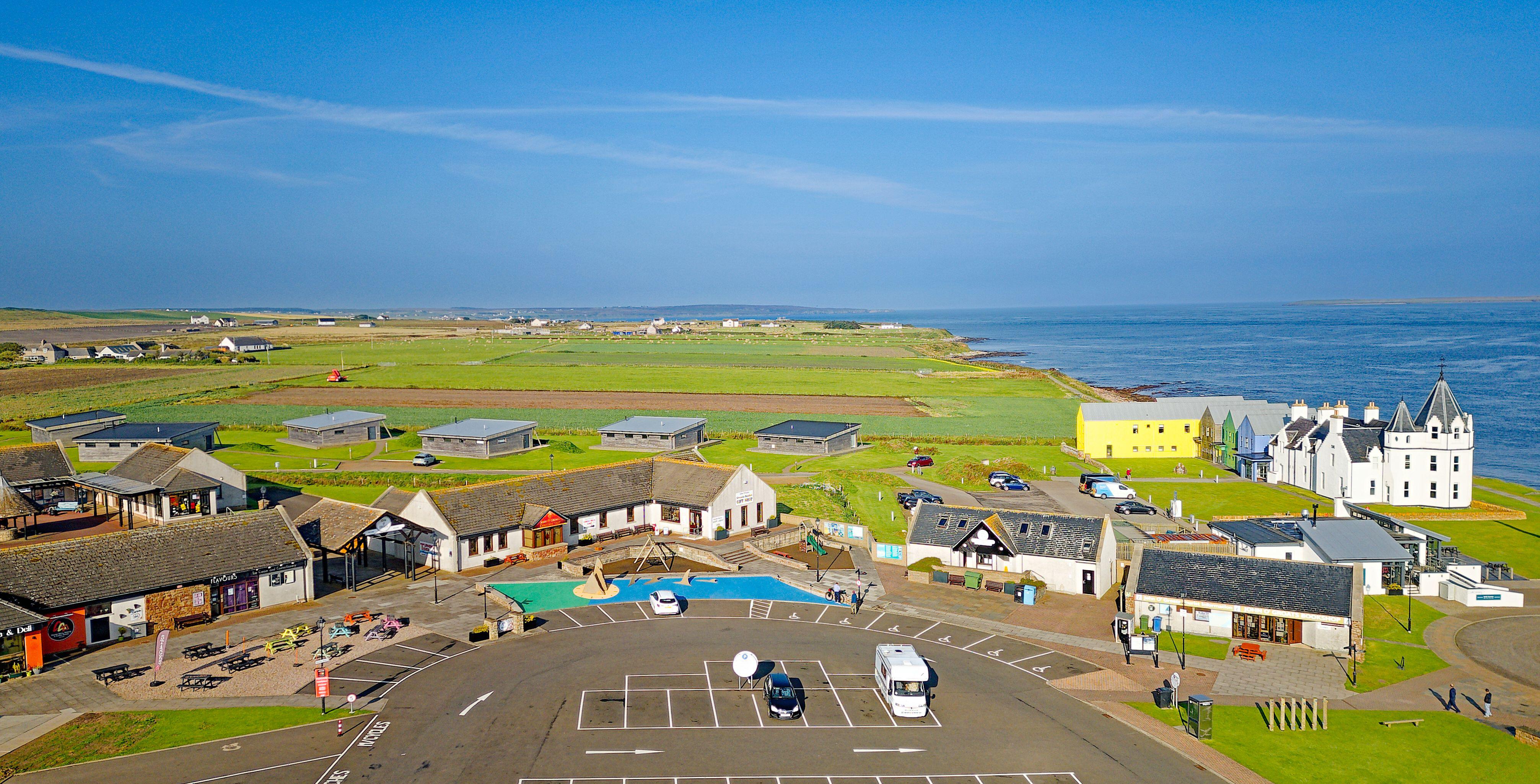Building a difference: What happened to former 'Carbuncle' towns?
“We are striving to make John O’Groats world-class,” says Andrew Mowat, “and we’re getting there.”
For years, the Caithness village traded on its location on the northernmost edge of the UK mainland. Tourists came to have their picture taken at the signpost pointing to New York, London, Land’s End, or wherever else they could pay a vendor to have a name inserted for the photo op; others came as part of the “end-to-end” route linking, eventually, with Land’s End in England 876 miles away.
But café owner Mowat, who has lived his whole life there, doesn’t want the 300-strong village to be “world-class just for visitors, it has to be world-class for locals as well” – a place not just to drop into but to stay in. And, as a resident, business owner and the treasurer of two local development trusts, he is part of efforts that have secured wholescale regeneration for the coastal community and helped it shrug off the status of “most dismal town” in Scotland.
Conferred by the Carbuncle Awards, which pointed out the worst of the built environment, the dishonour came in 2010, but when organisers from the Urban Realm architecture magazine tried to find someone to take their zit-like “Plook on the Plinth” statuette and make it official, locals refused to accept it and it eventually went to runner-up Denny instead.
The gong had been given to John O’Groats thanks in part to the long-empty landmark hotel, described by the judges as “Britain’s most northerly derelict building”, its “reliance upon tourist tat” and its “clutter of timber huts, caravans, portacabins and untended landscaping”. “John O’Groats may be geographically on top of the world,” said Carbuncles spokesperson John Glenday, “but its built environment is scraping [the] bottom.”
It was probably a good thing

Before: the derelict John O'Groats hotel | Alamy
The judges would be hard-pressed to make the same choice now, thanks to a development masterplan which has brought in millions of pounds of investment. Developed by Highlands and Islands Enterprise (HIE) and consultants GVA Grimley, the 2009 strategy was created after community consultation, launched in the wake of the unwanted gong and is now celebrating its 15th year. The hotel has been brought back to life, with a colourful “Norse-style” extension adding glass-fronted luxury lodges. Other accommodations have been renovated, a deli, jeweller and ice-cream parlour have moved in, and the John O’Groats Brewery is complemented by the new 8 Doors Distillery on what was a derelict site.
The upgraded football pitch is now “the best playing surface in Caithness”, Mowat says, and there has been improvement too to the carpark, which provides ongoing funding for local projects thanks to its £3.50-per-day charge. Wi-Fi has been installed and art installations brought in. And still there are more plans for the future: the reinstatement of the historic golf course; the potential community-buy out of the local estate; a community takeover of the former passenger ferry service which also provided wildlife watching tours until its owners retired. The John O’Groats Mill Trust, to which Mowat belongs, is working on a multi-million-pound redevelopment of the grade 2 listed landmark, which will become a heritage attraction and community space. And there is hope of raising the funds necessary for new housing to build up the population.
The Carbuncle award “was the catalyst that kickstarted everything”, Mowat says. “People started to take note and look. It was probably a good thing.”
“People can hardly believe the difference,” says Carol Gunn of HIE, a Thurso resident and frequent visitor to John O’Groats. “It’s far more vibrant, far more positive, there’s more community confidence.
“People are happy to be associated with John O’Groats now.”
From its location overlooking the Pentland Firth, the village was the tenth place to win the Plook on the Plinth, which first went to Airdrie in 2000. It was last conferred to Aberdeen in 2015 and was officially cancelled two years later, having been branded “cynical, crass, commercial, stupid, unhelpful, petty nonsense” by the secretary of the Royal Incorporation of Architects in Scotland and “damaging” by then-Labour MSP Elaine Smith. New Cumnock was a winner, as were Glenrothes, Linwood, Coatbridge and Denny, while Cumbernauld took it home twice.
Cumbernauld needs a vibrant, functioning town centre and not a monument to brutalist architecture

Cumbernauld is ready for a major revamp | Alamy
While former North Lanarkshire Council deputy leader Paul Kelly said the status had “unfairly stigmatised” communities in the new town, its brutalist architecture had long split opinion.
Designed by architect Geoffrey Copcutt and team, Cumbernauld was part of efforts to offer a better way of living to residents of nearby Glasgow’s crowded tenements. Its massive central hub, which with its hotel, apartments, bus station, library and retail space brought civic and commercial amenities together, was opened by Princess Margaret in 1967, described by Harpers as a “soaring citadel” and called “a rabbit warren on stilts” by Carbuncles’ judges.
Whatever its original promise, the flat-roofed structure suffered in the Scottish weather and that pioneering design proved less practical than had been intended. Several phases of change and upgrade failed to address the decline and last year the local authority bought out the whole shebang thanks to £9.225m of levelling-up funding from the UK Government. “This is the first step towards realising Cumbernauld’s Town Vision,” said the council, which will now embark on the area’s largest ever redevelopment programme. “While the building represented the future in the 1960s, it does not fit with the community’s vision of what they need from a modern town centre”, it said, and the new space – set to take 10 years to deliver – will “bring education, community space, employment and homes into the heart” of the town.
The whole thing could have been stopped in its tracks if Historic Environment Scotland (HES), having received a request to give the building listed status, had done so. When a consultation opened in 2022, local MP Jamie Hepburn and then-MP Stuart McDonald urged HES to let it go, saying constituents felt the same. “Over the last few weeks and months, many constituents have made clear to us that they are opposed to any efforts to list the building and that they are generally supportive of proposals to redevelop the town centre,” they wrote. “Cumbernauld needs a vibrant, functioning town centre and not a monument to brutalist architecture.” To the dismay of its fans, HES agreed, saying development plans were “too far advanced” for any listing to be made.
It was a shopping centre, too, that led to former car giant Linwood getting its ‘plook’ in 2011. The Renfrewshire town suffered a severe downturn when the Talbot plant closed under Thatcher, and, coming first in 2011, its mostly disused centre was described by Carbuncles bosses as the “worst” shopping centre in Scotland.
The site had been hailed as the country’s first “regional shopping centre” but failed to live up to the hype and ran under occupancy. By the 2000s it had become so bad that it served as a backdrop to an S1 Jobs advert in which an unwitting job applicant ended up trudging through puddles wearing a toilet costume while children laughed and shouted “lavvy heid” at him. While the ad wasn’t about Linwood, per se, the message was clear: this was a shit place to be.
But still, when the award was announced, local councillor Audrey Doig was less than impressed.
I had all the anxiety about it

Councillor Audrey Doig assesses construction
The SNP politician was in talks with supermarket giant Tesco at the time. The grocer had been poised to build a new outlet on the land, but the project had stalled due to a downturn in takings, and she feared any negative publicity could tip the balance. “I had all the anxiety about it,” she says. “It was quite a difficult process.” Doig, who was first elected in 2007, remembers worrying that the “best chance” for her community was slipping away. “There were no protests about Tesco coming here,” she says, “unlike in a lot of other places. People wanted it. It’s been a great thing to get it done. It was needed.”
Doig was part of a group of SNP activists who protested at the car factory before the bulldozers moved in, with some tying themselves to the gates. As many as 4,800 direct jobs were lost in a move which was met with fury on the green benches at Westminster. “We are under no illusions about the impact on the immediate area of Linwood,” then-Scottish secretary George Younger told the house. “The loss of 4,800 jobs cannot occur without creating major economic and social problems.”
In the wave of unemployment and deprivation that followed, many of those affected left the area and that population decline hit schools and services, as well as lowering potential trade for the shopping precinct. The takeover of the lease by Balmore Properties for £1.7m in 2001 made little difference and anti-social behaviour grew as units continued to empty. By 2006, then-MSP Hugh Henry had organised a petition to end that lease and when Tesco mooted its move one year later it was a relief to many, despite the corporate connection between Tesco and Balmore.
The deal earned the creation of a new community hall and library facility, plus premises for the local housing association. And it galvanised women in the community to form the Linwood Community Development Trust and agitate for further improvement. Mossedge Village followed, providing sports and community facilities, plus associated enterprises like the Roots of Linwood greengrocer project.
The £24m ON-X leisure complex, run by council body OneRen, has further complemented the area’s regeneration, with hundreds of school pupils recently convening on the brand new £450,000 running track – a World Athletics standard facility praised by local Olympian Jemma Reekie.
“People were always fairly proud” of the community, Doig says, but it has been “uplifted” and transformed into “one of the most well-served in Scotland”. And while deprivation continues to be a significant issue, she says change has brought jobs and opportunities. “It’s definitely not the most dismal town in Scotland,” she says.
This is the beginning of the world

The results of investment in John O'Groats | Alamy
In John O’Groats, Mowat says the same is true there. He learned business from his father Walter and is working on “leaving a legacy”. “Local people have bought into this”, he says of the regeneration, with all but two businesses Caithness-owned, and he suggests it would be “hard to find a family that doesn’t have someone involved” in some part of the overall project, such as the £4.9m mill scheme.
“It was always seen as a bit of a tacky place,” comments HIE development manager Hilary Budge. “There has been huge improvement. The community is a huge part of that. Ten years ago they were looking at tidying things up, now they are looking at multi-million pound projects and delivering them.”
For Mowat, the question is what comes next. And from its place on the country’s edge, perhaps that is fitting for John O’Groats. “We always say this is the beginning of the world,” he says.
Holyrood Newsletters
Holyrood provides comprehensive coverage of Scottish politics, offering award-winning reporting and analysis: Subscribe